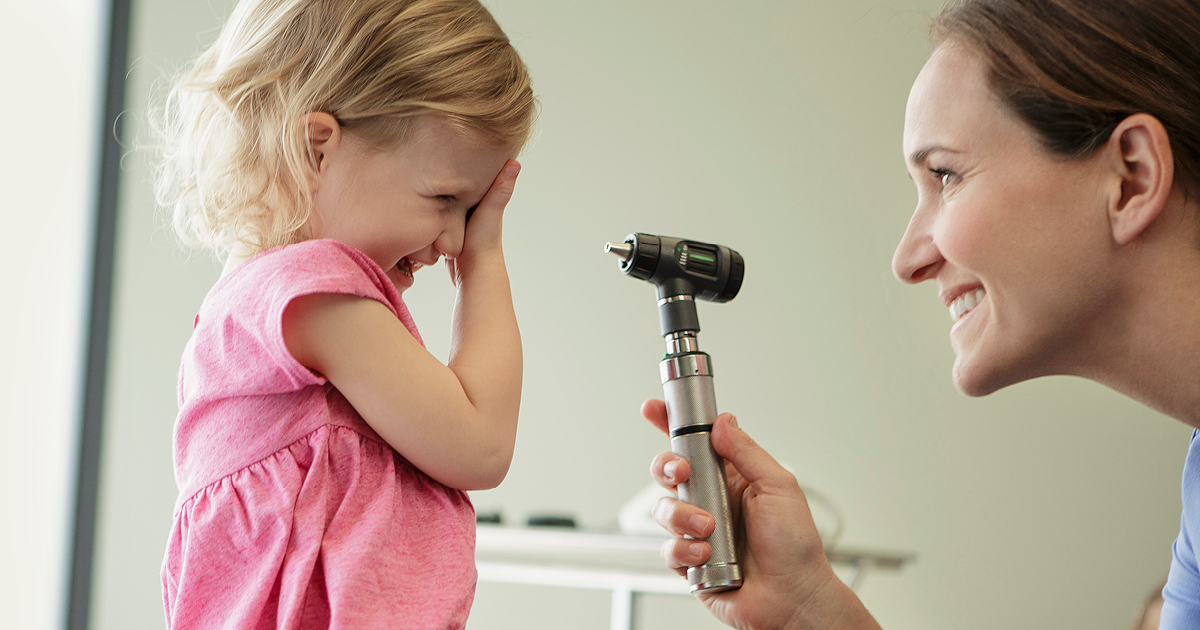August marks Children’s Eye Health & Safety Month, serving as an important back-to-school reminder for parents to assess their children’s vision to set them up for academic success. Healthy vision contributes to children’s school readiness, ability to learn, overall development, and ability to reach motor developmental milestones. One in every four school-age children and one in every 17 preschool-age children have some form of vision problem. If gone untreated, vision impairments can halt proper development and negatively affect school performance.
We sat down with Joel Leffler, M.D., pediatric ophthalmologist at Pediatrix affiliate Children’s Eye Care of North Texas in Plano, Texas, to discuss when parents should have their child screened and what to be on the lookout for at home, as well as how the COVID-19 pandemic is impacting eye care.
Screening recommendations and warning signs
As a child grows, an untreated eye disease or condition becomes more difficult to correct. These can worsen over time and lead to other serious problems, as well as hinder reading ability, focus, behavior, personality and social adjustment in school. Common vision problems that affect children include amblyopia (lazy eye), strabismus (misaligned eyes) and refractive errors, including myopia (nearsightedness), hyperopia (farsightedness) and astigmatism.
The American Academy of Pediatrics recommends that children’s eyes be screened by their pediatrician at birth, by 6 months of age, at 3-4 years of age, at 5 years of age and each subsequent year at their well-check visit. However, the standard vision screening performed by a pediatrician does not take the place of a comprehensive eye exam provided exclusively by a specialist. Dr. Leffler notes that the standard vision screenings may produce false-positive results and recommends that children have a complete exam administered by an ophthalmologist by age three, especially if there is a family history of eye problems.
Parents are advised to be on the lookout for the following warning signs of vision problems:
- Constant eye rubbing
- Extreme light sensitivity
- Poor focusing
- Poor visual tracking (following an object)
- Abnormal alignment or movement of the eyes (after six months of age)
- Chronic redness of the eyes
- Chronic tearing of the eyes
- A white pupil instead of black
In school-age children, other signs to watch for include:
- Inability to see objects at a distance
- Trouble reading the blackboard
- Squinting
- Difficulty reading
- Sitting too close to the TV
Dr. Leffler encourages parents to take advantage of the at-home testing resources made available by the American Academy of Ophthalmology, which can help identify issues that require the attention of a specialist.
Eye care during the COVID-19 pandemic
COVID-19 has had an impact on vision care as it has on most areas of healthcare. From increased use of telemedicine to the effects of virtual schooling and possible virus transmission through the eyes, here are some new eye care considerations to keep in mind:
- Parents may be hesitant about scheduling in-office visits for their child, but they should not delay care if they have a concern. Many practices utilize telemedicine to provide basic exams virtually, which can determine the need for a more comprehensive, in-person visit. Like all medical professionals, ophthalmologists are following strict in-office hygiene and disinfection guidelines, including use of a mask and personal protective equipment where appropriate.
- Many schools across the country will resume in a virtual format. As a result, there may be less of an opportunity for a child to realize they are having difficulty with their vision as many children first recognize and verbalize eyesight concerns when they have trouble reading the blackboard. There will also be limited access to vision screenings typically provided on-site by schools. For these reasons, it is increasingly important for parents to be on the lookout for potential warning signs at home.
- Virtual schooling means increased screen time, which can be hard on youngsters’ eyes. The act of focusing on a computer screen or tablet can promote the progression of nearsightedness. To maximize comfort, Dr. Leffler recommends positioning the screen further away from the child and placing it near a window with natural sunlight. Regular exposure to sunlight has been shown to reduce myopic development and progression, so while outdoor recreational activities are currently limited, it’s important for children to spend some time outside daily to help offset the increased stress on the eyes – even if just for a walk around the block or playtime in the yard.
- The eyes may harbor COVID-19 and the tear duct can be a portal of entry into the respiratory system. The virus often presents as conjunctivitis in children with Multisystem Inflammatory Syndrome, a rare but serious complication associated with COVID-19. If a child develops conjunctivitis along with other COVID-19 symptoms, parents should seek medical attention. Parents are also advised to educate children on the importance of touching their face as little as possible as well as practicing good hand washing and using a sanitizing agent in between washings.
Can't find time to read? Listen instead!
